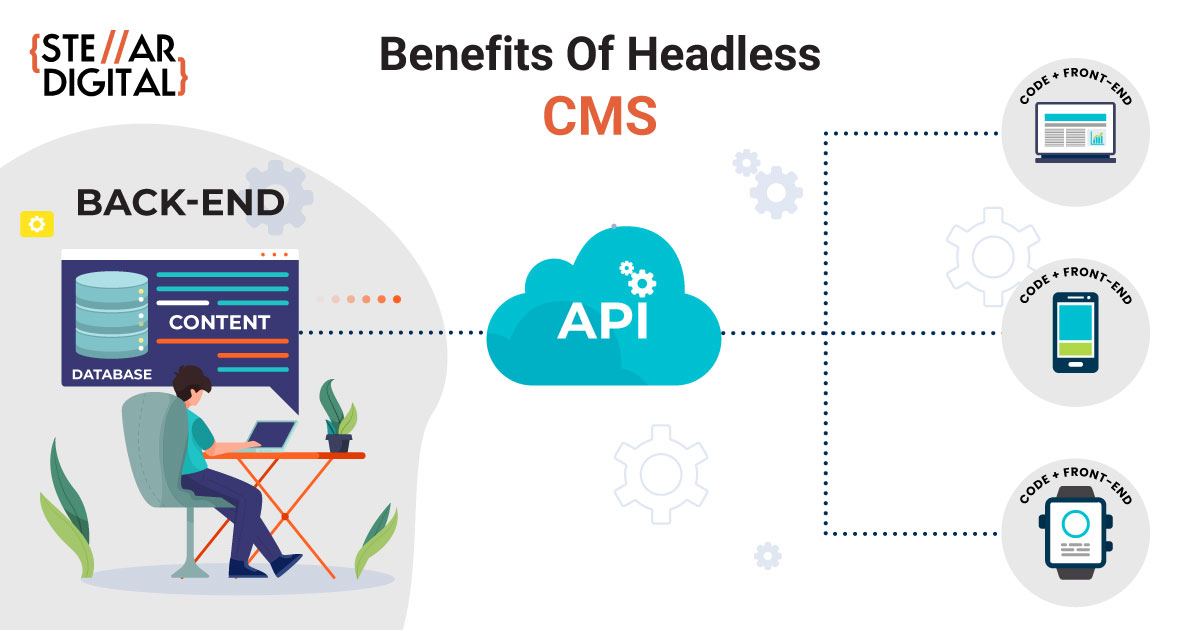Benefits of Headless CMS through WordPress and JAMstack
 Abdullah Developer
Abdullah Developer
The ever-changing web development world is using both Headless CMS and Jamstack to build and manage websites in new ways. This post will look at how integrating WordPress as a headless CMS with JAMstack can benefit you.
What’s a Headless CMS?
A headless CMS serves as a backend-only content management system that functions as a source of content. It differentiates the two, unlike traditional CMSs by performing both content handling tasks and presentations. This results in editable content that can be delivered over APIs, thus it is useful for any front-end technologies.
Why choose WordPress for Headless CMS?
WordPress is a famous Content Management System (CMS) known for its power and huge number of plugins available. By using WordPress in this way, you still retain the familiar features of its content management system while decoupling it from presentation on the front end. Here are some important benefits:
Content Flexibility: When using WordPress as a headless CMS, your data can be reached via RESTful APIs or GraphQL, enabling you to employ any kind of front-end technology like React.js, Vue.js, or just plain HTML thereby giving you more flexibility when building and designing your website.
Supercharged Performance: JAMstack (JavaScript, APIs, and Markup) is concerned with static site generation and client-side rendering. Through delivering pre-built pages and using CDNs your website can load much faster compared to traditional server-rendered sites.
Enhanced Security: Decoupling the front end from the back end reduces the attack surface. WordPress being solely a content provider has fewer vulnerabilities for would-be attackers to exploit. Thus, modern front-end frameworks’ security features add to that improving overall site security.
Scalability: As traffic increases, JAMstack sites grow with ease. For instance, while WordPress deals with content management without getting slowed down by front-end rendering demands, high traffic is taken care of by static files delivered through CDNs.
Better Developer Experience: Developers can rely on contemporary JavaScript frameworks and tools in creating dynamic and interactive user experiences. This permits the separation of concerns enabling front-end and back-end teams to work independently resulting in a more efficient development workflow.
How to Integrate WordPress with JAMstack
To integrate WordPress with JAMstack, follow these general steps:
Set Up Your WordPress Installation: Install WordPress and configure it as usual. Install plugins like WPGraphQL or WP REST API to expose your content via APIs.
Choose a Front-End Framework: Select a JavaScript framework that fits your project needs. Popular choices include Gatsby, Next.js, and Nuxt.js.
Fetch Content via APIs: Use the WordPress REST API or GraphQL to pull content from your WordPress installation. This content will be used to build your static site.
Build Your Static Site: Develop your front-end application using your chosen framework. Fetch and render content from WordPress, and generate static pages. Deploy Your Site:
Host your static site on a platform like Netlify, Vercel, or GitHub Pages. Configure your deployment pipeline to automate updates.
Real-Life Instances
Several renowned sites use WordPress as a headless CMS with JAMstack. For example:
The Smashing Magazine: With Gatsby for static site generation and WordPress for content management, this website offers a speedy contemporary reading experience.
The New York Times: The front end of the New York Times is disentangled from WordPress to enhance performance and attract more users to its content-heavy site.
Conclusion
Combining WordPress as a headless CMS with JAMstack principles provides an effective formula for modern web development. This way, it leads to better security, scalability, and performance of the overall site while improving the complete developer experience. Embracing this kind of architecture can help you be at the forefront of innovation in the industry as web technologies continue to evolve.
In case you have any experiences concerning headless CMS or JAMstack, please share in the comments!
Subscribe to my newsletter
Read articles from Abdullah Developer directly inside your inbox. Subscribe to the newsletter, and don't miss out.
Written by
